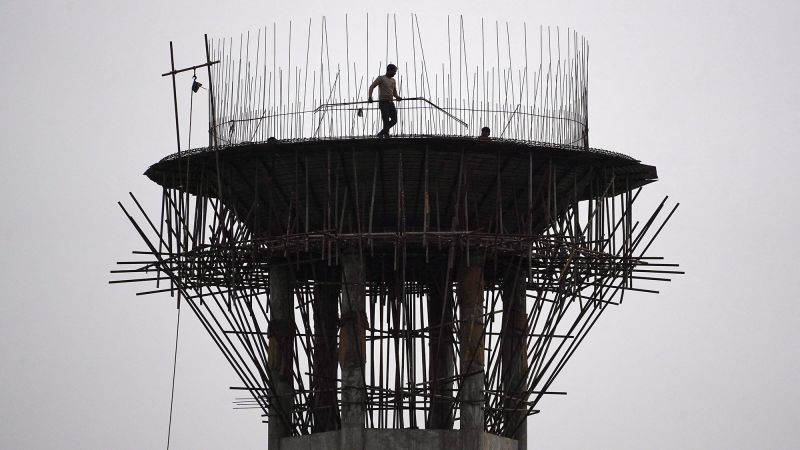India is set to hold the world’s largest democratic election, with an estimated 960 million eligible voters. It is widely expected that current Prime Minister Narendra Modi will secure a third consecutive term in office. Under Modi’s leadership, India has positioned itself to become a major economic powerhouse, offering an alternative to China for investors and brands looking for growth opportunities. India has healthy relationships with major economies and is actively attracting large companies to establish factories in the country.
Despite the potential for growth, India’s economic data can be unreliable, making it difficult to assess the country’s true economic situation. CNN has created five charts based on official sources to examine India’s performance since Modi came into power in 2014 and to highlight the challenges facing the next leader. India’s economy has reached $3.7 trillion in 2023, making it the fifth largest in the world, with the potential to grow at an annual rate of at least 6%. However, sustained growth of 8% or more is needed for India to become an economic superpower, with projections putting India as the third largest economy by 2027.
India has made investments in infrastructure and technology to drive economic growth, similar to the transformation China underwent three decades ago. The government has allocated significant funds for infrastructure development, leading to improved connectivity and job creation. Additionally, digital platforms such as Aadhaar and UPI have transformed daily lives and businesses, reducing corruption and increasing financial inclusion. The excitement around India’s growth potential is evident in its stock market, which has been hitting record highs, attracting both domestic and foreign investors.
The Modi government is focusing on attracting companies to invest in India, leveraging the global shift in supply chains away from China. India has launched a production-linked incentive program to encourage manufacturing in various sectors, leading to investments from major companies like Apple and Tesla. The government aims to create jobs for millions of Indians, particularly the youth population, which faces high rates of unemployment despite being well-educated. There is a mismatch between job aspirations and available opportunities, with the need for more remunerative jobs in non-farm sectors.
While India’s progress is impressive, there are challenges that need to be addressed, such as the need for inclusive growth to reduce income inequality and the creation of more jobs for the growing youth population. Despite these challenges, India’s economic potential is attracting global attention and investment. The country’s strong relations with major economies and strategic investments in infrastructure and technology position it as a key player in the global economy. With continued economic growth and policy reforms, India has the potential to become a major economic superpower in the coming years.


